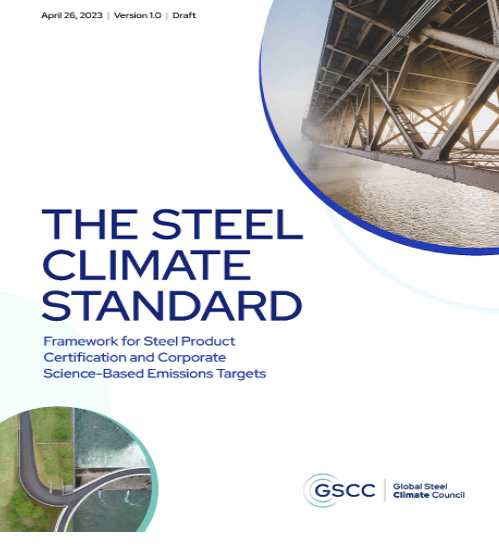The Global Steel Climate Council (GSCC), Washington, D.C. has drafted a standard for measuring and reporting carbon dioxide emissions in steel production. Council members aim to build on current accounting methodologies and reconcile gaps in multiple standards, published or under development. The standard GSCC envisions will:
- Provide a single, technology-agnostic protocol that applies to all steel producers equally;
- Allow all steel customers to know and compare the carbon emissions associated with steel; and,
- Create an industry standard for achieving by 2050 the emissions reduction goals in the Paris Climate Agreement.
GSCC announced the draft standard concurrent with the release of “Emissions Measurement and Data Collection for a Net Zero Steel Industry,” an International Energy Agency (IEA) report timed with preparations for last month’s Hiroshima G7 Summit. The Agency stressed that a clear, agreed-upon CO2 emissions measurement standard is critical for achieving global climate objectives, but suggested G7 leaders to avoid creating new steel industry measurement methodologies and rely on five existing standards under the International Organization for Standardization, World Steel Association (worldsteel) and ResponsibleSteel.

In a statement following release of “Emissions Measurement and Data Collection for a Net Zero Steel Industry,” GSCC notes that IEA acknowledges the ISO, worldsteel and ResponsibleSteel standards’ incompatibility and need for significant amendment. “Rather than providing simplicity and speed, this approach would complicate and further delay meaningful progress toward reducing carbon emissions associated with the global steel industry,” the Council contends. “While existing measurement standards should be taken into consideration, the most effective path forward will be a single, global standard that incorporates the strongest aspect of each into one clear, consistent, and coherent methodology. We urge the G7 member states and other organizations to support a global climate steel standard that meets these conditions and contributes to actual decarbonization across the steel industry.”
“Steel companies and associations from around the world have come together to develop a standard that will enable our industry to reduce carbon emissions and encourage investments in lower emission technology as part of the global effort to decarbonize,” says GSCC Chair and Nucor Corp. Executive Vice President Greg Murphy.
“Steel is integral to the functioning of global economies, including clean energy infrastructure,” adds GSCC Board Member and Steel Dynamics Vice President, Environmental Sustainability Jeff Hansen. “The Steel Climate Standard is a simple and understandable benchmark for reducing our industry greenhouse gas emissions and provides a transparent means to make informed decisions.”
GSCC’s proposed standard is comprised of two main components: (1) product certification criteria that allows customers to know if the steel they are buying is on the glidepath to achieve Paris Climate Agreement goals; and, (2) a corporate-wide, science-based target-setting framework based on a 1.5°C glidepath. The GSCC standard would measure all key GHG pollutants from (GHG Protocol-defined) Scope 1, 2 and 3 emissions. Producers would have to report independent verification of their emissions and reduction targets. The standard’s product intensity goals for the steel industry are based on the IEA’s carbon budget for the iron and steel sector, which is aligned with the 1.5°C scenario for net zero emissions by 2050.
“The GSCC standard offers a clear future for steel in a decarbonized economy and aims to achieve the lowest overall emissions from the sector by 2050,” affirms GSCC Board Member Franc Cardona, head of Public Affairs for CELSA Group, Barcelona.
GSCC is one of several groups and companies advocating for a global standard. Some in the United States and Europe are promoting a standard that features a “ferrous scrap usage sliding scale”—hence, one standard for steel made from traditional production processes and another for steel made from circular processes. “Creating a dual standard would allow high-carbon emissions steel to be prioritized over lower-carbon steel. This is a form of greenwashing and serves to discourage innovation and allows high-carbon steelmakers to postpone making changes in their production process,” contends Phil Bell, president of the Steel Manufacturers Association, Washington, D.C.